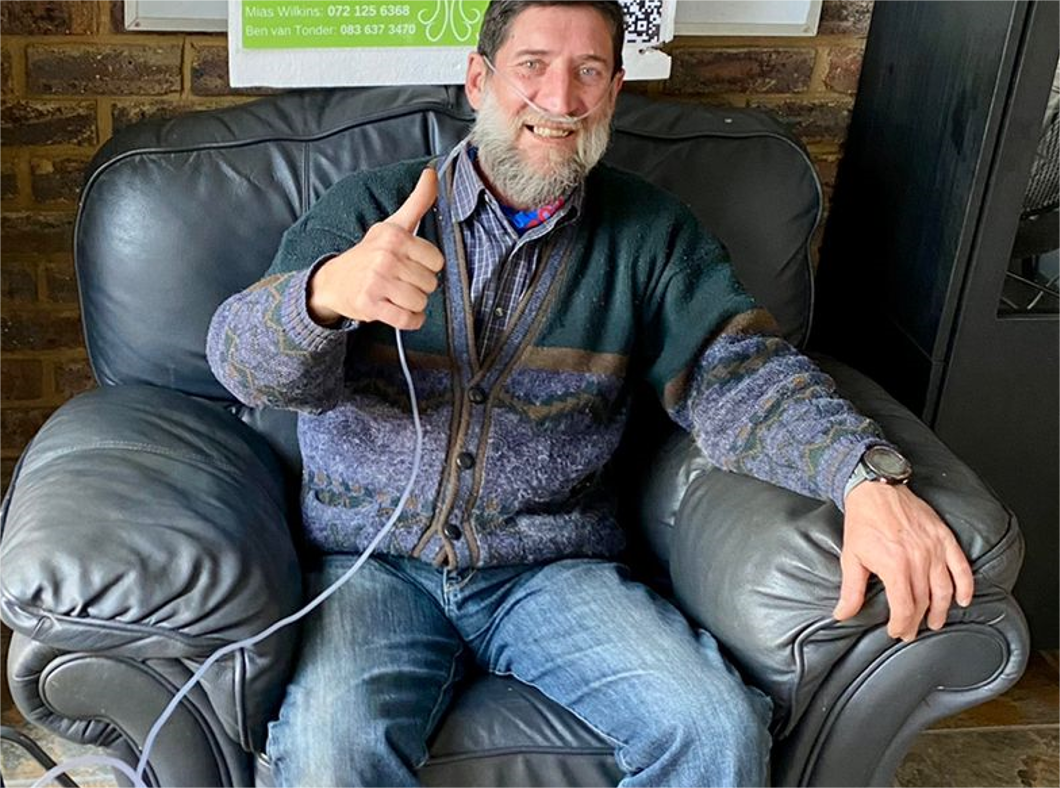Introduction
Portable oxygen concentrators have been a total game-changer for people with respiratory conditions. Finally, you can get supplemental oxygen anywhere - at home, work, running errands, traveling, you name it. But here's the thing - those standard oxygen prescriptions don't work for everyone. People's needs are just too different. What provides you with adequate oxygen might leave someone else breathless.
The key is customizing the settings and flow rate on your portable concentrator to meet your unique oxygen needs. You can find your personalized "sweet spot" by regularly checking your blood oxygen saturation using a pulse oximeter. This allows you to see how different flow rates impact your levels. By correlating the oximeter readings with how you feel at each flow rate, you can dial in the perfect personalized setting tailored just for you.
In this article, we'll go over recognizing your own oxygen needs, adjusting flow rates, using oximetry to monitor saturation, built-in oximeter features, and handy tips to personalize your supplemental oxygen. Read on to discover how we can optimize your portable oxygen therapy.

Understanding Oxygen Needs Vary Between Individuals
While oxygen prescriptions provide a starting guideline, individual oxygen needs can differ significantly, even at rest or while sleeping. For example, you may feel you need 2.5 LPM in between standard settings of 2 LPM and 3 LPM. But you may need a higher flow during exercise than prescribed. Oxygen needs vary based on health status, age, body size, activity levels, and other factors. Recognizing and accommodating your specific oxygenation goals and needs is crucial for effective therapy.
How to Customize Flow Rate Settings to Your Requirements
When first using your prescribed portable oxygen concentrator, begin at the lowest flow rate setting, typically 1 or 2 LPM. Closely monitor your breathing and oxygenation - are you getting adequate oxygen? Is your breathing comfortable at rest and with minor exertion like walking?
If you feel like you are not getting enough oxygen or you become breathless or fatigued at the starting flow rate, incrementally increase the setting by 1 LPM every 10-15 minutes until you reach your optimal flow. For example, go from 2 to 3 LPM and monitor for 15 minutes, then increase again to 4 LPM if needed.
There are no universal rules or standards dictating what settings you must use. You may need to fine-tune the flow rate for different circumstances - a lower setting for rest, slightly higher for minor activity, and maximum setting during strenuous exercise. Adjust the flow rate at any time to meet your custom oxygen needs for the situation. Finding your personalized flow rates for rest, activity, sleep, and other scenarios is key for optimal therapy.

How to Utilize Oximetry for Oxygen Saturation Monitoring
Regularly checking your blood oxygen saturation levels with a reliable finger pulse oximeter provides crucial data to guide appropriate flow rate adjustments. You can monitor your oxygen saturation closely before and after increasing the flow rate on your concentrator. This allows you to correlate specific flow settings with your target saturation levels.
For example, if increasing the flow rate from 2 to 3 LPM boosts your oxygen saturation from 91% to 95%, you have likely dialed in an appropriate personalized flow setting for that situation. The oximetry readings enable you to customize and optimize the flow rates from your portable oxygen concentrator to accommodate your needs.
Aim to maintain saturation above 90% at rest and ideally between 92-98% during activity. Always adjust the flow rate if your levels drop below 90% to avoid oxygen deprivation.
Built-In Oximetry for On-The-Go Monitoring
The Lovego portable oxygen concentrator offers a built-in finger pulse oximeter to enable real-time oxygen saturation monitoring at any time. By displaying your current blood oxygen saturation level right on the screen, Lovego allows you to easily customize the flow rate to optimize your therapy anywhere.
The built-in oximeter makes it quick and convenient to check your oxygenation during exercise, sleep, airline travel, high-altitude environments, and any other scenario. Based on the readings, you can immediately increase or reduce the flow rate as needed to accommodate changing conditions and oxygen needs for the best therapy results.
Having oxygen saturation data at your fingertips gives you the power to confidently personalize your supplemental oxygen delivery for healthy levels in any situation. Built-in oximetry is a game-changer for effective, optimized portable oxygen therapy.
How to Adjust Oxygen Flow from Your Portable Concentrator
Here are some handy tips for personalizing your supplemental oxygen flow:
- Gradually turn up the flow rate while checking your oxygen level and breathing comfort.
- Take readings at rest, during activity, and even in bed to find settings that work.
- Boost the flow if your oxygen level dips below 90% or you feel breathless.
- Turn down the flow if your oxygen stays 97% or higher consistently.
- Re-check every so often as your needs change, and adjust the settings accordingly.
- Consult your doctor before making big adjustments to their prescribed flow rate.
Adjusting your settings is an ongoing process as your needs evolve - so don't be afraid to fine-tune until you find your sweet spots.

Take Charge of Your Health Through Personalized Oxygen Therapy
Every person has unique oxygen needs - there's no one-size-fits-all. Effective oxygen therapy is about customizing your flow to match your specific requirements. That's where monitoring your oxygen saturation comes in - it provides the key data to correlate adjustments to your needs.
Built-in oximeter features, like on the Lovego, make it easy to optimize your flow for your goals anytime, anywhere. So don't settle for a generic oxygen prescription - take charge and personalize your therapy for results that work for you.





Commenta
Questo sito è protetto da hCaptcha e applica le Norme sulla privacy e i Termini di servizio di hCaptcha.